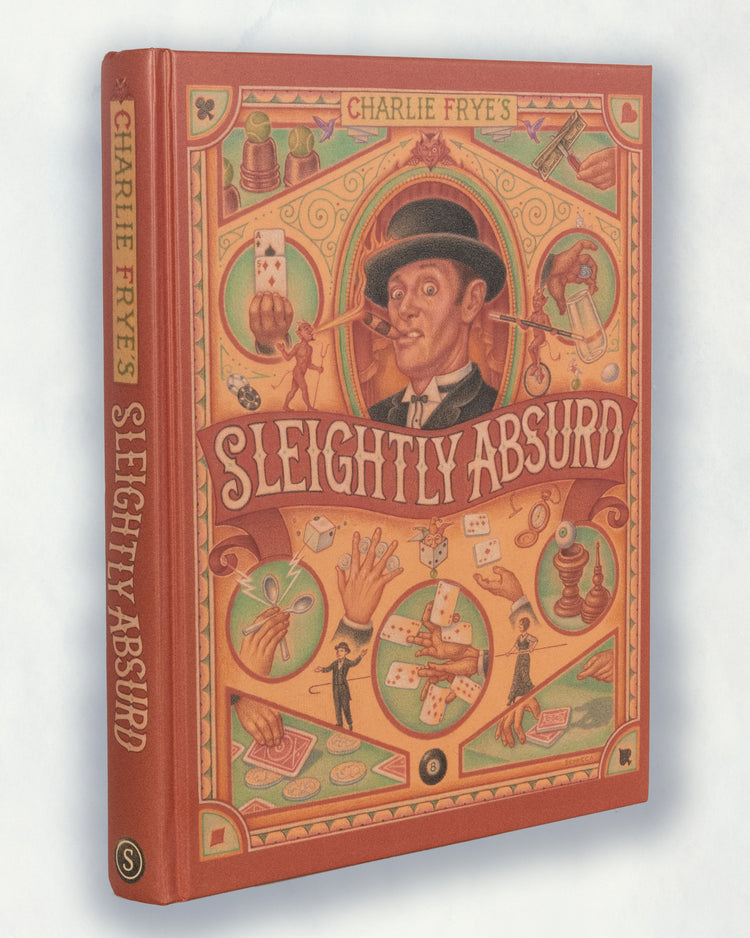I’m finally wrapping up reading Charlie Frye‘s magic book Sleightly Absurd. I picked this up at Hocus Pocus in Fresno way back in October when I was visiting their shop.

This book is a fun read and it has a lot of “non traditional” magic book feeling routines in it. The routines have endings to them, which is something that lacks in many magic books by magicians who aren’t out there working. The other thing is that Charlie isn’t a “I do easy stuff so I can concentrate on performing” type of person. He’s doing things with whatever level of difficulty that the trick requires to make the trick the best. Sometimes that’s means hard sleight of hand and sometimes it’s a math principle. I totally respect that approach!
One of the interesting things for me is towards the back of the book there’s Charlie’s approach to Any Card at Any Number. It’s a fairly standard approach where you use a memorized deck and a variety of techniques to get the card at the desired number. He does a great job of breaking down his thought process how determines the best way to go about it and describes many scenarios.
For me the best part is how he calculates the stack number backwards (from the face of the deck).

I had to read that part about half a dozen times for it to make sense for me and once I did, it made total sense! I also figured out a way to get rid of having to remember the pairs, they all all up to 3 or 13, so there’s no memorization of the five pairs, just remembering one rule. This is a game changer for me, it makes the doing the math from the face of the deck insanely easy! This one little thing is worth the price of the book if you use a memorized deck!
This is a great book and totally worth the $75 it sells for!
– Louie






















